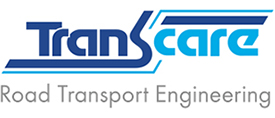How To Reduce Fleet Depreciation
Fleet depreciation is one of the biggest costs for most trucking businesses. Over time, rolling capital loses value, accumulates damage and, eventually, requires replacement at high cost. Most managers assume that there’s little that they can do about this process. It’s just a fact of life in their industry, just like any other.
But, strictly speaking, that’s not true. There are several strategies that you can use to lower depreciation. Here’s what you need to do:
Spec Vehicles Correctly
First, always ensure that you spec vehicles correctly. Don’t attach trailers they are not designed to take, and never go over the recommended weight limit. Staying within guidance means the vehicle will experience less wear and tear and, therefore, last longer.
Time Your Purchases
Next, time your truck purchases. Don’t buy new. Instead, wait a short while for vehicles fresh off the factory production line to lose some of their initial value. Then make your purchase. Remember, most trucks lose around 20 percent of their value by the end of their first year. After that, the depreciation rate slows considerably.
Try To Beat The Market Depreciation Rate
You can try to beat the market depreciation rate by holding onto your trucks. Instead of selling them and just accepting the going rate, keep them in the business and run them into the ground. If you look after them well, you’ll often find that you save money compared to selling them early.
Invest In Predictive Maintenance
Waiting for vehicles to become damaged before repairing them is a bad policy. Once one component is in a state of disrepair, it can damage others, leading to higher overall deprecation.
The trick here is to invest in predictive maintenance. Doing so has two main effects:
- Preserving the original component and reducing replacement costs
- Preventing damage to other components requiring additional maintenance
Applying preventative maintenance generates significant savings on individual vehicles. But when you scale it across an entire fleet, the benefits to profit margins can be considerable.
Organise Your Fleet Better
Today’s trucks are more reliable than ever before. Manufacturing processes have improved significantly over the last forty years. Because of this, many vehicles will run for 200,000 miles or more reliably.
For some companies, it is not the quality of the fleet that is the problem: it’s the management of the existing stock. When firms overuse a particular vehicle, perhaps due to high demand, it experiences more wear and tear than it should, causing its salvage value to fall more rapidly.
The trick here is to optimise your fleet using software. These solutions can track how far any vehicle has driven in a given week, when it’s due its next service, and which vehicles you should use for your next shipment.
Source Higher Quality Vehicles
Lastly, not all vehicles suffer the same rate of depreciation. It depends on the make and model. If you are purchasing on the second-hand market, choose vehicles with a proven track record. Look for trucks that can survive UK conditions. Transcare are the maintenance experts to trust, able to offer specific recommendations and assistance. Any enquiries? We’re here to help!








